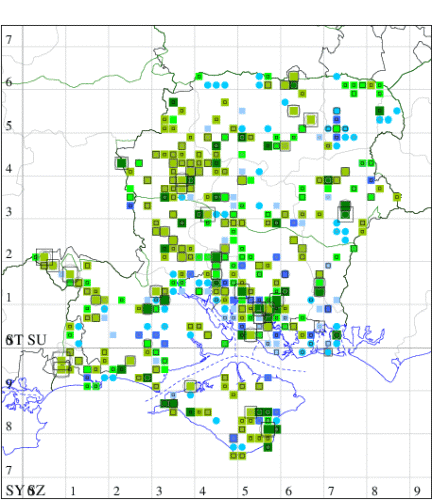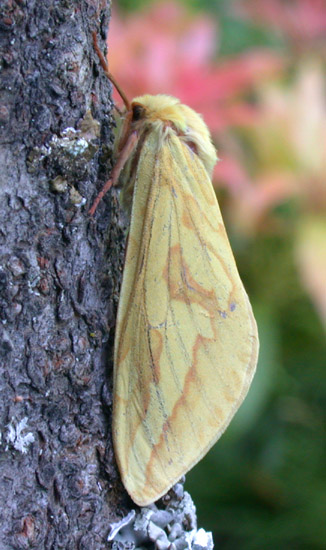Ghost Moth
Hepialus humuli
Checklist Number03.005 [B&F: 0014]
Verification
Record will be accepted (subject to date and location checks)
Classification
| Family: | Hepialidae |
| Subfamily: | Hepialinae |
| Genus: | Hepialus |
| Species: | humuli |
| Authority: | (Linnaeus, 1758) |
Common in rough meadows and grassland throughout much of Britain and Ireland, but excluding the Isles of Scilly, a species of conservation concern under the UK Biodiversity Action Plan. Widespread in Hampshire and on the Isle of Wight but local and declining. The males have leks in grassy places on downland and in meadows where they fly in numbers at dusk, and the females wander, presumably on egg-laying missions, and come occasionally to light. Wingspan male 44-46 mm, female 46-48 mm. Unmistakable. The larva is polyphagous in the root systems of many grasses and herbaceous plants such as Stinging Nettle and Hop, over-wintering twice.


The abundance in each month is indicated as follows:
 No records
No records Very occasional
Very occasional Irregular
Irregular Uncommon
Uncommon Off-peak, but not unusual
Off-peak, but not unusual Off-peak, but not unusual
Off-peak, but not unusual Main flight time
Main flight time| J | F | M | A | M | J | J | A | S | O | N | D | |
|---|---|---|---|---|---|---|---|---|---|---|---|---|
| Adult |  |  |  |  |  |  |  |  |  |  |  |  |
| Larval |  |  |  |  |  |  |  |  |  |  |  |  |



